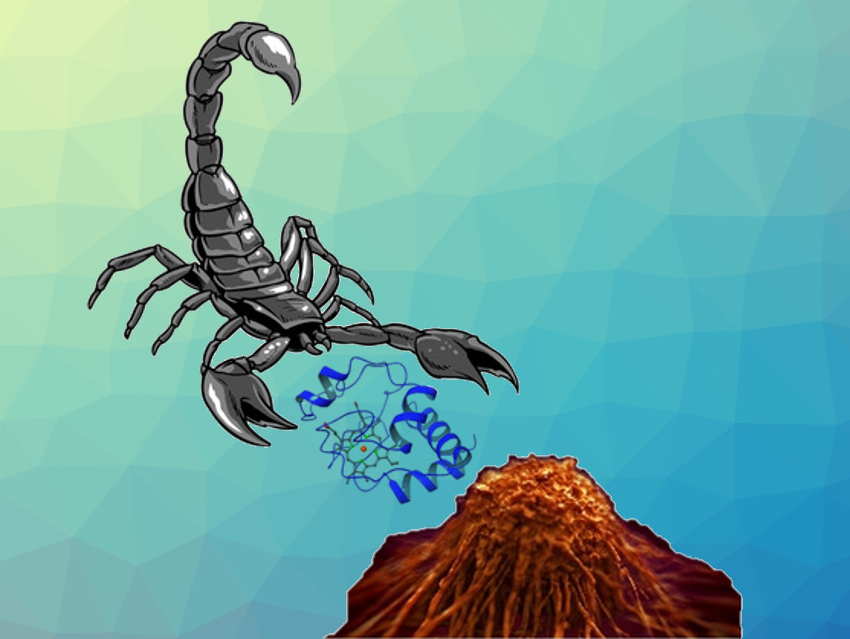Malignant gliomas are responsible for at least 70 % of primary brain tumors. Despite modern diagnosis and treatment methods to combat these kinds of tumors, around 90 % of patients show recurrence. This is because glioma cells rapidly acquire resistance against radio- and chemotherapies. Also, current chemotherapeutic drugs used to treat gliomas lack specificity and cause adverse side effects. A drug that can specifically target glioma cells and to mitigate resistance would, thus, be useful.
Arthur D. Tinoco, University of Puerto Rico at Río Piedras, San Juan, Puerto Rico, and colleagues have biosynthesized a hybrid protein for use against gliomas by binding cytochrome c (Cytc), a heme-based protein, to chlorotoxin (CTX), a bioactive peptide isolated from the venom of the scorpion Leiurus quinquestriaus. The Cytc–CTX hybrid was expressed in E. coli bacteria and purified using chromatography.
The researchers assessed the cellular interaction of the Cytc–CTX protein by treating the glioma cell line 9L/Lacz. They found a dose–response effect on cell viability. Overall, the team has developed a simple, cost-effective, and reproducible biosynthesis of a recombinant hybrid protein with potent cytotoxicity against a glioma cell line. The Cytc–CTX hybrid could be a promising anti-glioma drug candidate.
- A Cytochrome c‐Chlorotoxin Hybrid Protein as a Possible Antiglioma Drug,
Louis J. Delinois, Harold Peón, Juan C. Villalobos‐Santos, Josell Ramírez‐Paz, Jennifer Miller, Kai H. Griebenow, Arthur D. Tinoco,
ChemMedChem 2020.
https://doi.org/10.1002/cmdc.202000373




